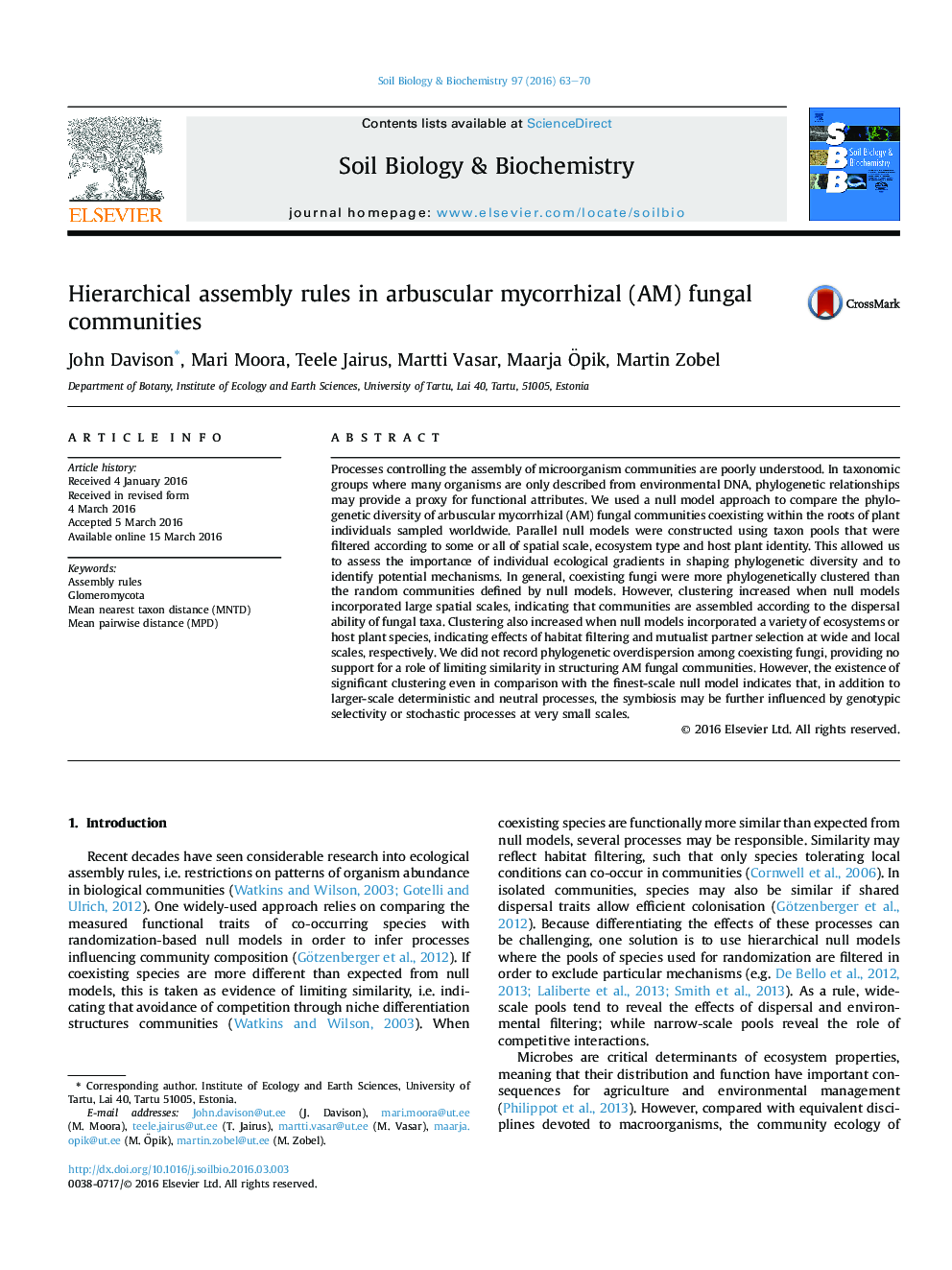| Article ID | Journal | Published Year | Pages | File Type |
|---|---|---|---|---|
| 2024320 | Soil Biology and Biochemistry | 2016 | 8 Pages |
Abstract
Processes controlling the assembly of microorganism communities are poorly understood. In taxonomic groups where many organisms are only described from environmental DNA, phylogenetic relationships may provide a proxy for functional attributes. We used a null model approach to compare the phylogenetic diversity of arbuscular mycorrhizal (AM) fungal communities coexisting within the roots of plant individuals sampled worldwide. Parallel null models were constructed using taxon pools that were filtered according to some or all of spatial scale, ecosystem type and host plant identity. This allowed us to assess the importance of individual ecological gradients in shaping phylogenetic diversity and to identify potential mechanisms. In general, coexisting fungi were more phylogenetically clustered than the random communities defined by null models. However, clustering increased when null models incorporated large spatial scales, indicating that communities are assembled according to the dispersal ability of fungal taxa. Clustering also increased when null models incorporated a variety of ecosystems or host plant species, indicating effects of habitat filtering and mutualist partner selection at wide and local scales, respectively. We did not record phylogenetic overdispersion among coexisting fungi, providing no support for a role of limiting similarity in structuring AM fungal communities. However, the existence of significant clustering even in comparison with the finest-scale null model indicates that, in addition to larger-scale deterministic and neutral processes, the symbiosis may be further influenced by genotypic selectivity or stochastic processes at very small scales.
Keywords
Related Topics
Life Sciences
Agricultural and Biological Sciences
Soil Science
Authors
John Davison, Mari Moora, Teele Jairus, Martti Vasar, Maarja Ãpik, Martin Zobel,
